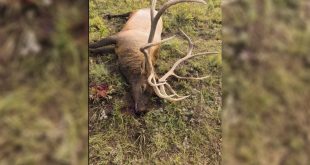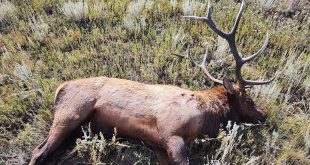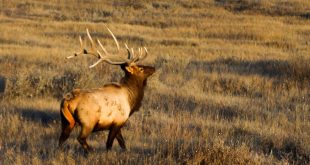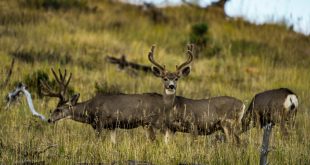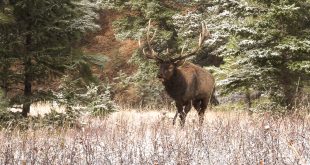
This seems like a bit of a joke and it is to some degree, but there is also some very solid truth built into this short and overly simplified statement. Elk are roamers and need plenty of open, varying country to roam in. Over the past 25 years, I have found elk in some very obscure and off-the-wall places. For instance, I once found two big bulls in a fight to the death while antelope hunting over 30 miles from the nearest pine tree. On another occasion, I found a herd of elk while turkey hunting in the tobacco country of Eastern Kentucky. While hunting ibex in the Altai Mountains of northern Mongolia I even shot at a jet-black wolf that was stalking a 360-bull. While these may be extreme examples, I think you get the point, but if not, the point here is you just never know exactly where you might find a big bull elk, even within the confines of your hunting unit.
Getting to know your elk area is one of the most powerful tools you can employ to find more elk. Just by hunting an elk area even for a second time can increase your odds at killing a bull drastically. Learning a new elk area can be a difficult process, a process that takes time, effort, and a bit of a plan that makes the most use of your time in the field.
In my experience, it takes a good three or four seasons to even begin to fully master your elk area’s full potential. This learning curve can be somewhat reduced by employing some simple techniques and strategies that will put you ahead of the curve the next time you head into a piece of elk country with a tag in your pocket.
At-home scouting is probably the most useful tool to make the best of your time before the elk season even begins. Employing some solid at-home scouting tools such as custom and digital maps, Google Earth, state game and fish proclamations and web forums can put you way ahead of the game right from the comfort of your man cave no matter where you live…
 Eastmans' Official Blog | Mule Deer, Antelope, Elk Hunting and Bowhunting Magazine | Eastmans' Hunting Journals
Eastmans' Official Blog | Mule Deer, Antelope, Elk Hunting and Bowhunting Magazine | Eastmans' Hunting Journals

